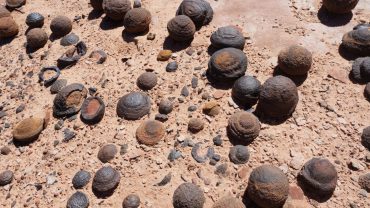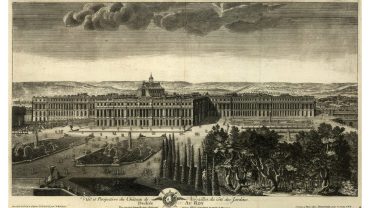Her name may not be as familiar as other legendary explorers, but the achievements of Jeanne Baret, botanist, pioneer, entrepreneur, and adventurer, are no less astonishing. Perhaps even more so. She is celebrated as the first woman to circumnavigate the globe, a feat she accomplished in the late eighteenth century. This remarkable journey was not just a geographical conquest but also a bold defiance of the societal norms of her time.
Baret’s journey around the world was not just a physical journey but also a carefully orchestrated act of deception. In an era when women were barred from naval voyages, she disguised herself as a man – Jean Baret – to join the 1766 expedition led by Louis Antoine de Bougainville. This audacious act, driven by her thirst for knowledge and adventure, enabled her to traverse the globe, setting her apart as a pioneer in an age when women were often banished to the margins of exploration and discovery.
But how did she manage this extraordinary feat, and from where did she gain the knowledge to become a world-class botanist? Let’s take a trip back to eighteenth century France in an attempt to shed light on this most marvellous maritime mystery.
The Early Years of Jeanne Baret

1771, Bonne Map of Burgundy, France. (Credit: Sepia Times/Universal Images Group via Getty Images)
Jeanne Baret didn’t set out to be an explorer. Born in July 1740 in La Comelle, a rural village in the Burgundy region of France, her father, Jean Baret, was most likely an illiterate labourer, while her mother, Jeanne Pochard, is believed to have focused on raising the family.
Details of Baret’s early life, including her childhood and young adulthood, are largely unknown. However, it’s widely believed she had minimal, if any, formal education. Despite this, she was recognized locally for her expertise in herbalism, earning the nickname ‘the herb woman’ due to her knowledge of plants’ medicinal uses. How she came about this knowledge is one of the many mysteries of her life.
Later biographers have suggested that her mother may have been a Huguenot, a group of literate religious Protestants, and it was her who educated the young Jeanne Baret. Others posit she was taught by her parish priest or perhaps taken under the wing of the French equivalent of the Lord of the Manor.
Sometime around her twentieth birthday, she met the man who would dramatically and permanently alter the course of her life. Literally and metaphorically.
The House of M. Commerçon

Old chromolithograph illustration of Botany, water plants. (Credit: mikroman6 via Getty Images)
As early as 1760 but perhaps as late as 1764, Jeanne Baret joined the employ of renowned botanist and naturalist Phillipe Commerçon (anglicised to Commerson) who had settled in Burgundy, and worked as his housekeeper.
Commerçon’s wife died soon after giving birth to their son around 1762 (it’s not certain if Baret was already working for him by then) and it’s probable that Baret took over the management of the house. It’s also likely, although not certain, that the relationship between Commerçon and Baret became personal, as she fell pregnant sometime in early 1764. According to surviving documents, the baby died after being placed in foster care around the summer of 1765. A second child, probably born in 1766, isn’t believed to have survived past his ninth or tenth birthday.
On a professional level, one of Jeanne Baret’s tasks was to help M. Commerçon with the categorisation of his plant species. In 1765, Commerçon was invited to join a Louis XV-funded round the world expedition headed by Louis Antoine de Bougainville, a famous French admiral and explorer.
Commerçon was initially said to have hesitated in accepting the position of Expedition Botanist as he suffered from frequent ill-health, but when it was proposed he could bring someone with him as a nurse and scientific assistant, he agreed to join the crew of the Etoile.
However, a French royal ordnance prevented women from serving aboard French naval ships, so they concocted a cunning plan.
Jeanne Baret, or Jean Baret?

Portrait of Pierre Poivre, French horticulturist and botanist (1719 -1786). (Credit: powerofforever via Getty Images)
Several versions exist about how Commerçon and Baret managed to board the ship together. The most commonly told story is that Baret disguised herself as a man, and together with Commerçon, they met at the quayside, acting as if they were strangers to one another. She is said to have offered to be his assistant, he accepted, and because Commerçon was laden with so much scientific equipment, the captain of the Etoile, François Chenard de la Giraudais, gave up his suite – which crucially came with its own toilet – to the ship’s botanist and his assistant, the newly-named Jean Baret.
It’s worth noting however that there is some historical doubt whether she used the name Jean Baret on the ship or if this was a later embellishment to the story.
It’s believed the ship left Nantes in November 1766 (some sources say it left France in February 1767), and set sail for Rio de Janeiro in Brazil. From Rio, the ship headed southwest to Montevideo in Uruguay where they collected a vast number of specimens, including a new flowering vine they called Bougainvillea in honour of the expedition leader. They then went south through the Strait of Magellan at the southern tip of South America.
Next, the ship headed west to Tahiti, and though accounts of the details differ, it’s thought it was there that her true identity was revealed. One version of the story – from Bougainville yet disputed by others – suggests that the Tahitian locals immediately knew she was a woman and she was forced into telling the crew to benefit from their protection.
Another version that was substantiated at the time was that the crew uncovered her disguise when they reached Papua New Guinea and didn’t take too kindly to the deception. Again, historical sources vary on the detail and location of the reveal.
Nevertheless, she remained on board and continued her groundbreaking scientific work alongside an increasingly fragile Commerçon. It was said that Jeanne Baret, botanist and nurse, eventually earned respect from her peers for her courage, resilience and strength.
After a stop in the Dutch East Indies (now Indonesia) for supplies, the ship docked at Isle de France, known today as Mauritius. Commerçon and Jean Baret disembarked and remained behind as the guests of the island’s governor and fellow botanist and horticulturist Pierre Poivre.
Between 1770 and 1772, Jeanne Baret’s voyage continued, this time to Madagascar and Bourbon Island, now called Réunion, in the Indian Ocean, to collect plants.
In February 1773, Phillipe Commerçon died on Isle de France, and at some point in the early 1770s, Poivre was recalled to France. In the meantime, it was reported that Baret was granted property on the island and set up a tavern.
She married a French non-commissioned officer named Jean Dubernat in 1774 and with the money granted to her in Commerçon’s will, they moved back to France, probably around 1775 or 1776, settling in Dubernat’s home village of Saint-Aulaye in the Dordogne region. Her circumnavigation of the globe was complete.
In 1785, she was granted a pension by the French Ministry of Marine and it became evident how highly she was regarded, despite her deception –
Jeanne Barré, by means of a disguise, circumnavigated the globe on one of the vessels commanded by M de Bougainville. She devoted herself in particular to assisting M de Commerson, doctor and botanist, and shared with great courage the labours and dangers of this savant. Her behaviour was exemplary and M de Bougainville refers to it with all due credit…. His Lordship has been gracious enough to grant to this extraordinary woman a pension of two hundred livres a year to be drawn from the fund for invalid servicemen and this pension shall be payable from 1 January 1785.
She died in August 1807 at the age of 67.
Today, just one species is named after Jeanne Baret, the Solanum baretiae, a plant in the nightshade family. In 2018, the International Astronomical Union named a mountain range, Baret Montes, on Pluto after her.
Jeanne Baret, Botanist

Bougainvillea on a garden wall (Credit: Ayhan Altun via Getty Images)
Beyond her groundbreaking voyage as a genuine explorer, Baret’s contributions as an adventurer and a scientist are equally commendable. Her work alongside Commerçon was instrumental in the collection and identification of numerous plant species – perhaps as many as 6,000 – some of which were unknown to science at that time.
Her keen eye for botany and meticulous documentation of the flora encountered on their voyage significantly enriched the botanical knowledge of the era. Baret’s botanical expertise was not just an accompaniment to Commerson’s work; it was a crucial element which propelled their scientific explorations to new heights.
Her botanical collections and the valuable information they provided remain significant to this day. Many of her specimens made it back to France and can still be seen in museum collections, and at seed banks, universities, botanical gardens and research institutes all over the world.
The Legacy of Jeanne Baret

Louis Antoine de Bougainville, 1729-1811 (Credit: Fine Art Images/Heritage Images via Getty Images)
Jeanne Baret’s groundbreaking feat as the first woman to circumnavigate the globe was not always adequately acknowledged. While Baret did not document her own experiences during the expedition, the travel logs of several crew members shed light on the challenges she faced once her true identity was uncovered. The writings left by Bougainville and Commerçon not only illuminate the difficulties she endured but also underscore her remarkable achievements.
Her story is one of courage, resilience, and intellectual prowess. The astonishing journey, marked by both physical and metaphorical disguises, challenged the gender norms of her time and paved the way for future generations of women in science and exploration. Reflecting on her life and achievements, it’s essential to recognise the broader implications of her trip. It was not just a circumnavigation of the globe; it was a voyage that reshaped the perceptions of women’s capabilities and roles in scientific discovery and adventure.
Despite not setting out with the intention of becoming the first woman to circumnavigate the globe, her accomplishment is now widely recognised and celebrated.












